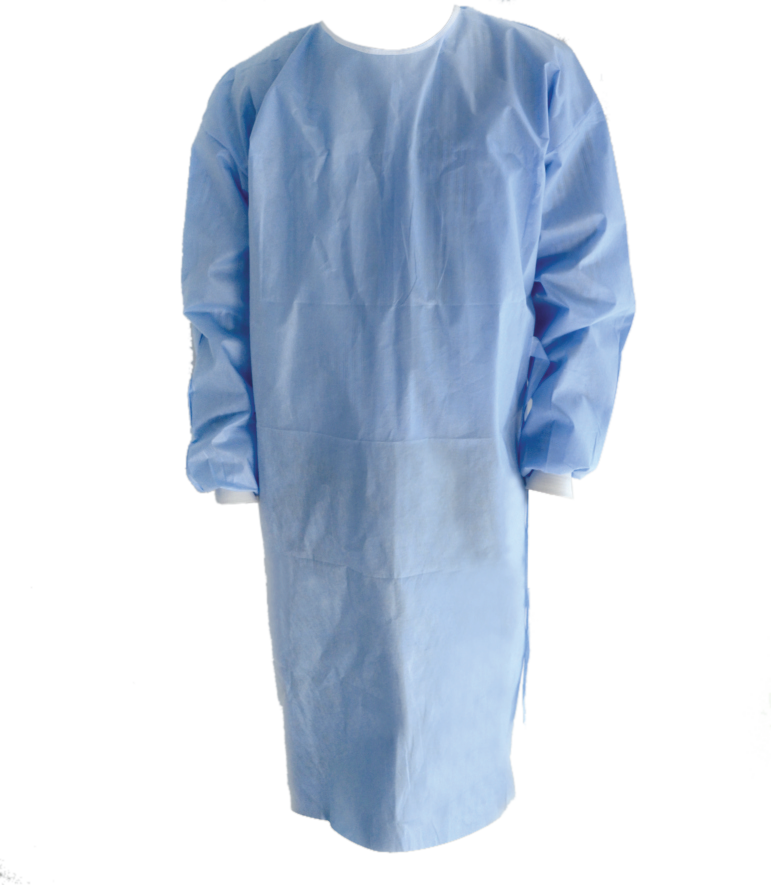
Surgical Gown (Spulance, sterile)
A surgical gown is a personal protective garment intended to be worn by health care personnel during surgical procedures to protect both the patient and health care personnel from the transfer of microbes. According to the CDC, "The surgical gown is designed to cover much of the body so that it will not contact contaminated surfaces and act as a barrier."
Surgical Gown (Spulance, sterile)
When it comes to protecting yourself and your patients during surgery, wearing a gown is one of the best things you can do. Gowns provide a barrier between you and potential sources of contamination, like blood and other body fluids. They also help keep you clean and dry, which is important for maintaining a sterile environment. Not only do gowns protect you, but they also protect your patients. By wearing a gown, you can help reduce the risk of infection and cross contamination. This is especially important in procedures where there is a risk of exposure to blood or other bodily fluids. Wearing a gown also shows that you are taking the necessary precautions to ensure a safe and successful surgery. It sends a message to your patients that you are serious about their safety and that you are taking all the necessary steps to protect them. This can help put them at ease and help them feel more confident in your care.
The surgical gown has a long and storied history, dating all the way back to the Middle Ages. Though the gown has gone through many changes over the years, its purpose has always remained the same: to protect the wearer from blood and other bodily fluids during surgery. The first recorded instance of a surgical gown being used was in 1363, during the Black Death pandemic. At that time, surgeons wore long, sleeved robes made of wool or linen to protect themselves from the deadly disease. The sleeves of these early gowns were often tied together at the wrist to prevent contamination. Over time, the surgical gown evolved to better meet the needs of both surgeons and patients. In the 19th century, for example, surgeons began to wear shorter gowns that allowed them greater freedom of movement while operating. And in the 20th century, disposable surgical gowns became increasingly popular as a way to further reduce the risk of infection. Today, surgical gowns are an essential part of any operating room. They not only protect surgeons and other medical staff from infection, but also help to create a sterile environment in which operations can be safely performed.
There are several different types of surgical gowns available on the market today. The most common type of gown is the disposable gown, which is made from a non-woven fabric. These gowns are usually white in color and are intended for one-time use only. Another popular type of surgical gown is the reusable gown. These gowns are made from a variety of different fabrics, including cotton and polyester. Reusable gowns can be washed and worn multiple times, making them a more economical choice for some surgeons. Finally, there are also sterile surgical gowns available. These gowns are sterilized prior to use and come in both disposable and reusable varieties. Sterile surgical gowns provide the highest level of protection for both the patient and the surgeon.
There are both benefits and drawbacks to wearing a surgical gown while performing surgery. One benefit is that the gown protects the surgical team from exposure to blood and other bodily fluids. This is extremely important in preventing the spread of infection. Another benefit is that the gown provides a barrier between the surgical team and the patient, which can help to reduce the risk of cross-contamination. However, there are also some drawbacks to wearing a surgical gown. One is that they can be quite hot and uncomfortable, especially during long surgeries. Another is that they can limit your movement, which can make it more difficult to perform certain tasks. In addition, surgical gowns can be quite expensive, which can be a burden for hospitals and clinics.